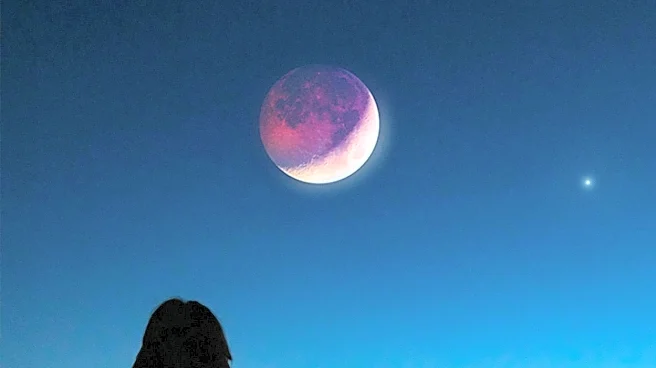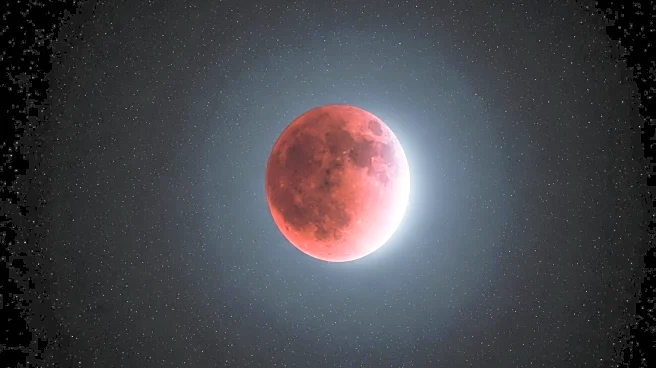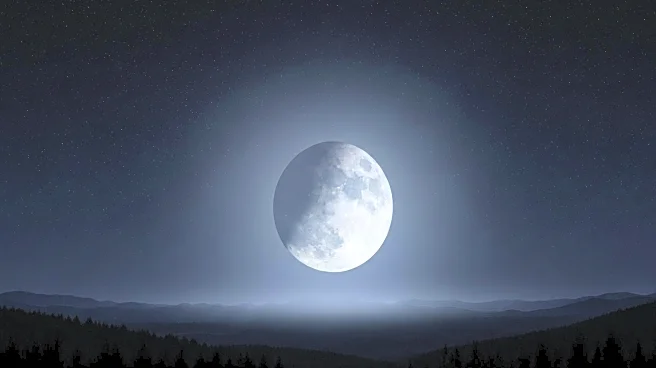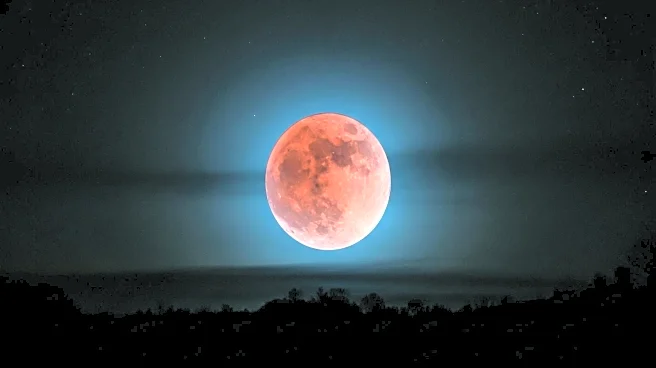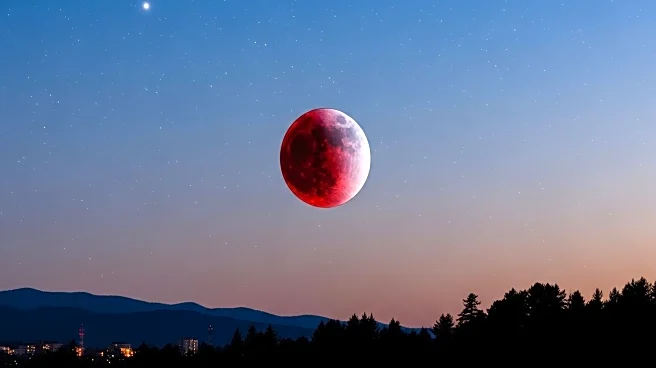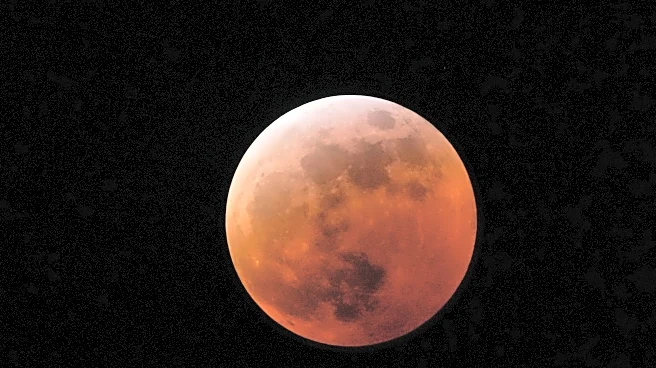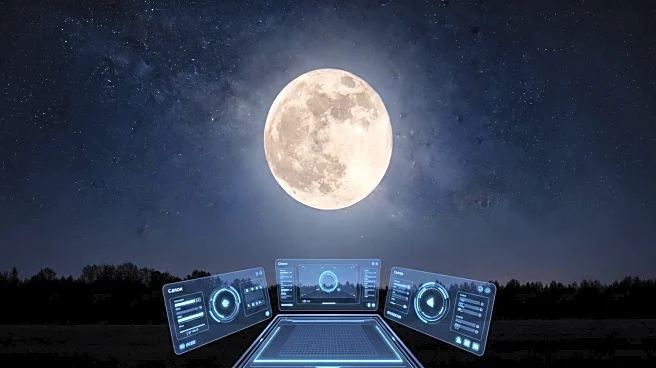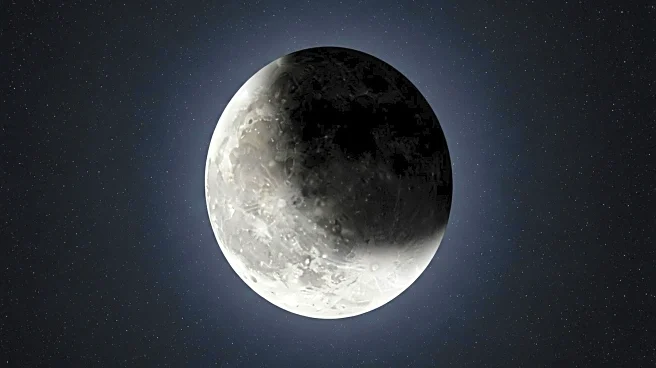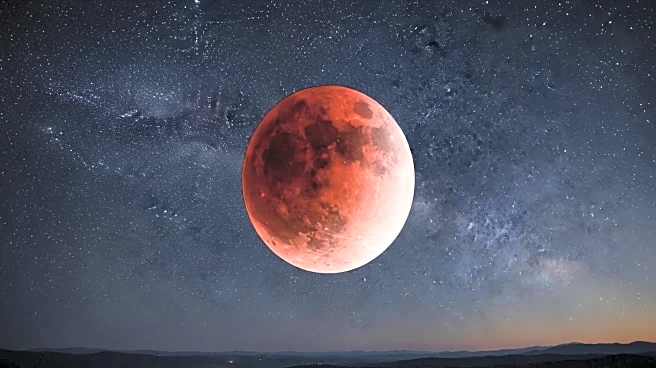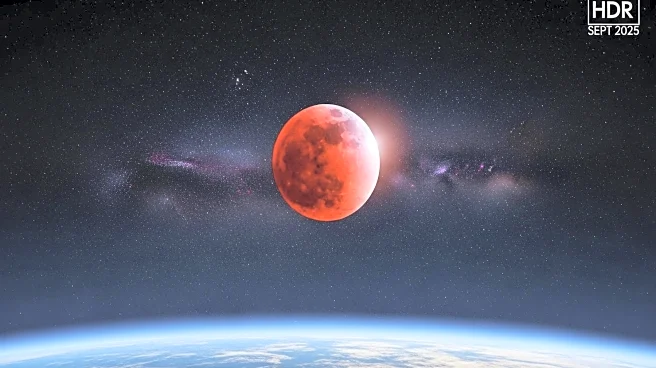What's Happening?
A total lunar eclipse, known as a blood moon, is set to occur this weekend, offering a spectacular view to skywatchers across Asia, Australia, Africa, and Europe. During this event, the moon will appear in a deep red hue as Earth's shadow covers its surface. This phenomenon is safe to observe without protective eyewear, unlike solar eclipses. The eclipse will be particularly dramatic as the moon passes through the darkest part of Earth's shadow, called the umbra, resulting in a rich rusty orange or brownish-red coloration. Unfortunately, viewers in the Americas will miss this celestial event, but a similar eclipse will be visible from North America in March 2026. Enthusiasts can follow live coverage and updates through Space.com's dedicated lunar eclipse live blog and livestream events.
Why It's Important?
The blood moon is a rare and visually striking event that captivates astronomers and the general public alike. While the Americas will miss this occurrence, the anticipation for the next visible eclipse in 2026 highlights the global interest in astronomical phenomena. Such events foster a sense of unity and shared experience among people worldwide, as they collectively marvel at the wonders of the universe. Additionally, the coverage and live streaming of the eclipse provide educational opportunities and inspire interest in astronomy and science.
What's Next?
For those in the Americas, the next opportunity to witness a total lunar eclipse will be in March 2026. Until then, enthusiasts can engage with online resources and communities to stay informed about upcoming celestial events. The anticipation for future eclipses may lead to increased interest in astronomy and related fields, encouraging educational initiatives and public engagement with science.
